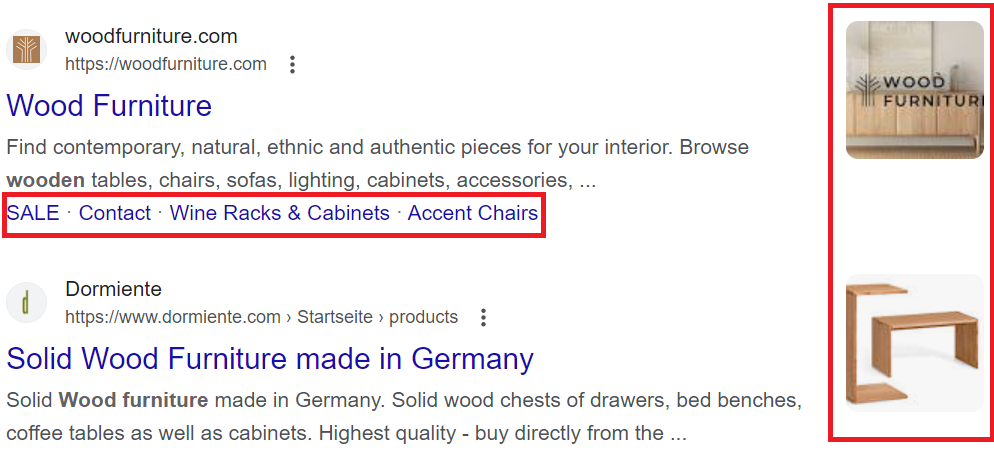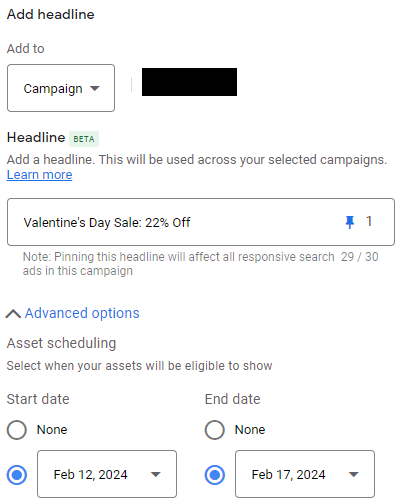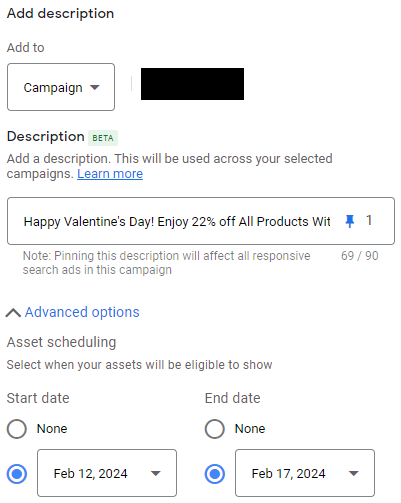Google Ads have an exciting new feature: headline and description ad assets.
What are Headline and Description assets, you ask? Let’s dive in.
What Are Ad Assets?
Assets on Google Ads are additional ad elements that include additional information about your product or service.
Assets were formerly called extensions. Among the most common types are sitelinks, promo assets, callouts, structured snippets, price, and image assets.
They are set up independently from responsive search ads and can be associated with the account, campaign, or ad group level.
Assets won’t always show with your ads, and which asset shows when depends on each ad auction.

What Are Headline And Description Assets?
Well, imagine being able to schedule specific headlines and descriptions for your ads without having to go through the hassle of editing them individually.
With this new feature, advertisers can associate up to three headlines and two description assets at the campaign level.
These assets will automatically be applied to all enabled Responsive Search Ads (RSAs) within the campaign.
This means that you no longer have to manually update each RSA with new headlines and descriptions – Google Ads does the work for you!
Schedule Time-Limited Headlines And Descriptions
But that’s not all. Campaign-level headlines and descriptions can also be scheduled to show during specific times.
This is especially useful for seasonal promotions. No more toggling between prime and sale ads.
Pin Your Ads to Success
Another exciting feature of Headline and Description assets is the ability to pin them to specific positions.
This ensures that your ads are displayed exactly how you want them to.
This level of control allows you to highlight key selling points, promotions, or unique features of your products or services.


Up To 18 Headlines and 6 Descriptions
Headline and description assets will count as additional to the ones already in your ads. This means you can now run responsive search ads with up to 18 headlines and 6 descriptions.
These assets will not be shown in the RSA asset report (which headlines and descriptions performed best), but you’ll still be able to analyze performance from the assets view (just like analyzing image assets).
Use For Testing New Assets
Savvy advertisers can use this new feature for testing new headlines. How does the new headline affect your existing RSA ads? Did performance improve since you added it?
This is a much easier, cleaner, test than editing your ads or duplicating new variations.
Just remember that headline and description assets will be added to all active ads in the campaigns you selected.
Conclusion
The introduction of headline and description assets in Google Ads is a super useful feature for advertisers.
Google Advertisers can schedule promotional messaging without changing each ad or creating new ads for each offer.
The feature can also be used to test new ideas.
Further Reading
- Mastering A/B Testing in Google Ads: Strategies for Optimal Results
- Google Performance Max vs. Standard Shopping Explained
- When To Use Target CPA vs Target ROAS?
- Why Does Google Ads Change Product Titles?
- 5 Performance Max Best Practices To Nail Sales

